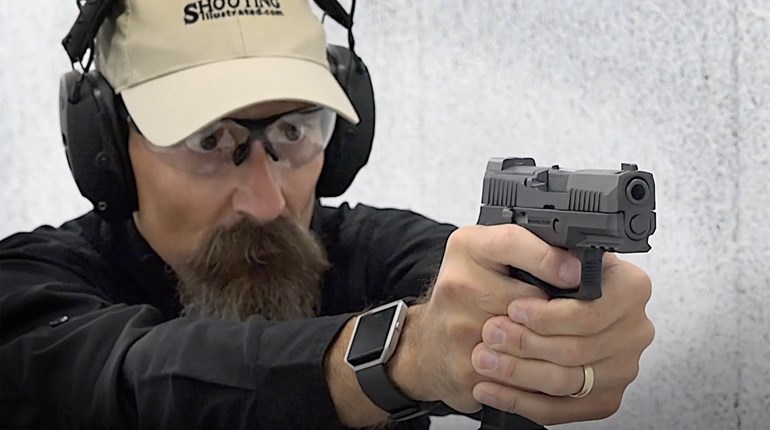
Although I have shot a few SIG handguns over the years, I have never handled a P226. My first SIG was a P220 in .45 ACP and I never really warmed up to that gun. I understand why there are fanboys of certain firearms, and SIG certainly has them, especially when it comes to the 226. The P226 was originally developed for entry into the XM9 Service Pistol Trials that were held by the U.S. Army in 1984. The P226 is essentially the same basic design as the P220 that was developed in 1975 and was the first SIG handgun to be sold in the U.S. market, initially by Browning as the BDA. The P226 was developed to use higher capacity double stack magazines compared to the 220. It has been offered in all of the popular calibers and has several sub-variants like the P228 and P229.
The Army ultimately adopted the Beretta 92; however, the SIG P226 was the only other gun to satisfactorily complete the trials with the Beretta. There has been much debate over the years as to why the Beretta was chosen, but the military said it was because the overall package price of the 92 was less than the P226. The Navy SEALs later chose the P266 as the MK25 variant, which I suspect is one of the biggest reasons for the fan club. It is a lot like when your grandpa clears a malfunction from his 1911 and hands it to you, saying “this thing won two world wars,” the SIG fan club touts the use of the P226 by the SEALs as a personal endorsement and justification of their extravagant spending on a handgun.
Out of the box I was impressed with the Legion version of the P226, the grips were nice and felt good in the hand. The grips are G-10 with the Legion medallion and look great against the Cerakote Elite gray coating that is standard on the Legion. Other features that make this model feel more natural when gripping are a reduced and contoured beavertail and more aggressive front strap checkering as well as the addition of checkering under the trigger guard. There is also an X-five undercut on the trigger guard that with the Elite beavertail allow for a higher grip and better control of the gun. The Legion features low profile decocking and slide catch levers, which I liked, that stayed out of the way of my support hand. The pull of the double action/single action was impressive for a “stock trigger.” This is not the stock trigger that I was familiar with on the previous SIGs that I have shot. The Legion comes with the SRT (Short-Reset-Trigger) and included the Grayguns, Inc.-designed P-SAIT trigger. If Bruce Gray is behind the design then you know it is going to be better when it comes to triggers. The P226 also comes with a solid steel guide rod to help balance out the gun.
The gun shot great, I was able to run it from the box pretty fast and had no issue with the trigger on this gun. I have paid several hundred dollars for trigger jobs on other da/ sa guns that were not as nice as this trigger setup. The SIG Electro-Optics X-RAY high visibility sights that come on the gun are great for a carry gun. The front sight’s large green insert was very easy to find and line up with the rear sight. For a competition gun, I would prefer a smaller all black post or red-fiber optic front sight. The gun weighs in at 34 ounces, a nice weight with good balance. Also available for the P226 is an RX slide that comes with a slide-mounted Romeo1 optic and iron sights. A quick swap, and you are running a Carry Optics gun without having to break the bank on milling a slide to make weight.
With 35 years of history, the SIG P226 has an impressive reputation as a reliable sidearm. The Legion version comes ready from the box to carry every day or to hit the range for a match. The MSRP is $1,413, but can be found at most places for $1,199. The additional slide and optic from SIG are $399. If you are looking for something that you can shoot all day from your competition holster and then stick in your carry holster after the match has been torn down, check out the SIG P226 Legion.
Article from the March/April 2020 issue of USPSA’s FrontSight magazine.
See more: The Future of Handguns: Did We Peak?



































